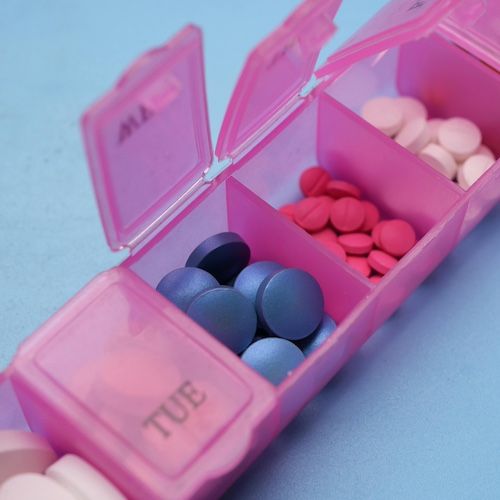News
Article
Alternate-Day Iron May Be More Effective for Patients with Anemia, Diabetes
Author(s):
Oral iron supplements did not significantly differ in increasing hemoglobin and ferritin levels, but the every-other-day oral iron proved more effective than daily use.
Credit: Towfiqu barbhuiya/Pexels

A recent randomized controlled trial evaluated the therapeutic effect of ferrous sulfate in patients with diabetes and iron deficiency anemia (IDA) to determine the difference in efficacy between taking iron every day or every other day.1
Usage of oral iron supplements showed no significant difference in increasing hemoglobin or ferritin levels but treating iron deficiency anemia on alternate days may be more effective than daily treatment for both healthy individuals and diabetic patients.
“Like other studies, this result concluded that there is a negative correlation between HbA1c and hemoglobin, and to check the status of HbA1c in diabetics, the level of hemoglobin should be considered first,” wrote the investigative team, led by Reza Ganji, PharmD department of clinical pharmacy, Ahvaz Jundishapur University of Medical Sciences.
Evidence has identified a significant prevalence of IDA among individuals with type 2 diabetes and its coexistence can have a symbiotic effect, leading to poor health outcomes.2 Diabetes can exacerbate anemia by reducing iron absorption; IDA can impair insulin secretion and disrupt glucose regulation, compromising glycemic control and increasing the risk of complications for those with diabetes.
Oral administration of iron supplementation using ferrous sulfate is a widely adopted strategy for IDA treatment due to its availability, safety profile, and cost-effectiveness.3 The prescribed dosage can require multiple administrations over a day for optimal outcomes. Administration of higher doses of oral iron can lead to the production of serum hepcidin and maintain its levels for at least 24 hours.4
Based on previous findings, administering iron supplements every other day and in singular doses appeared to optimize iron absorption and may provide a more favorable dosing regimen.3 For those with diabetes and IDA, there remains a knowledge gap related to the comparison between daily and every-other-day intake of iron to mitigate hepcidin-associated effects.1
The analysis’ primary aim was to assess the therapeutic effects of daily versus alternate-day iron supplementation on serum hemoglobin and ferritin levels among patients dealing with both diabetes and IDA. The controlled clinical trial enrolled 91 participants and randomly assigned them to receive 100 mg of ferrous sulfate every other day for 16 weeks or every day ferrous sulfate for 8 weeks.
After an initial screening process of 24 weeks, 72 people matched the criteria and were selected to enter the study. The primary outcome was the change in the serum level of hemoglobin and ferritin up to two weeks after treatment, with secondary outcomes investigating the relationship between hemoglobin and HbA1c changes after treatment of iron deficiency.
The expected primary outcome was changes in the serum level of Hb and Ferritin up to two weeks after treatment, as well as the secondary outcome according to studies conducted in the past investigating the relationship between Hb and Hb A1C changes after treatment of iron deficiency patients.
Upon analysis, Ganji and colleagues found that the hemoglobin and ferritin level differences between every-day and every-other-day iron supplementation were insignificant (P = .096 and P = .5000, respectively). However, the relationship between HbA1c and hemoglobin levels before and after treatment was positive and significant (r2 = .187).
“The results of the present study show that although the effectiveness of using oral iron supplements did not have a significant difference in terms of increasing hemoglobin and ferritin, the use of oral iron once every other day was more effective than the use of oral iron every day,” Ganji and colleagues wrote.
References
- Taati B, Ganji R, Moradi L, Vosoughi T, Gisouei A. Therapeutic effect of ferrous sulfate in diabetic patients with iron deficiency anaemia: a randomised controlled trial. Ann Med Surg (Lond). 2024;86(4):1989-1996. Published 2024 Feb 15. doi:10.1097/MS9.0000000000001838
- Soliman AT, De Sanctis V, Yassin M, Soliman N. Iron deficiency anemia and glucose metabolism. Acta Biomed. 2017;88(1):112-118. Published 2017 Apr 28. doi:10.23750/abm.v88i1.6049
- Stoffel NU, Cercamondi CI, Brittenham G, et al. Iron absorption from oral iron supplements given on consecutive versus alternate days and as single morning doses versus twice-daily split dosing in iron-depleted women: two open-label, randomised controlled trials. Lancet Haematol. 2017;4(11):e524-e533. doi:10.1016/S2352-3026(17)30182-5
- Ganz T. Hepcidin and iron regulation, 10 years later. Blood. 2011;117(17):4425-4433. doi:10.1182/blood-2011-01-258467





